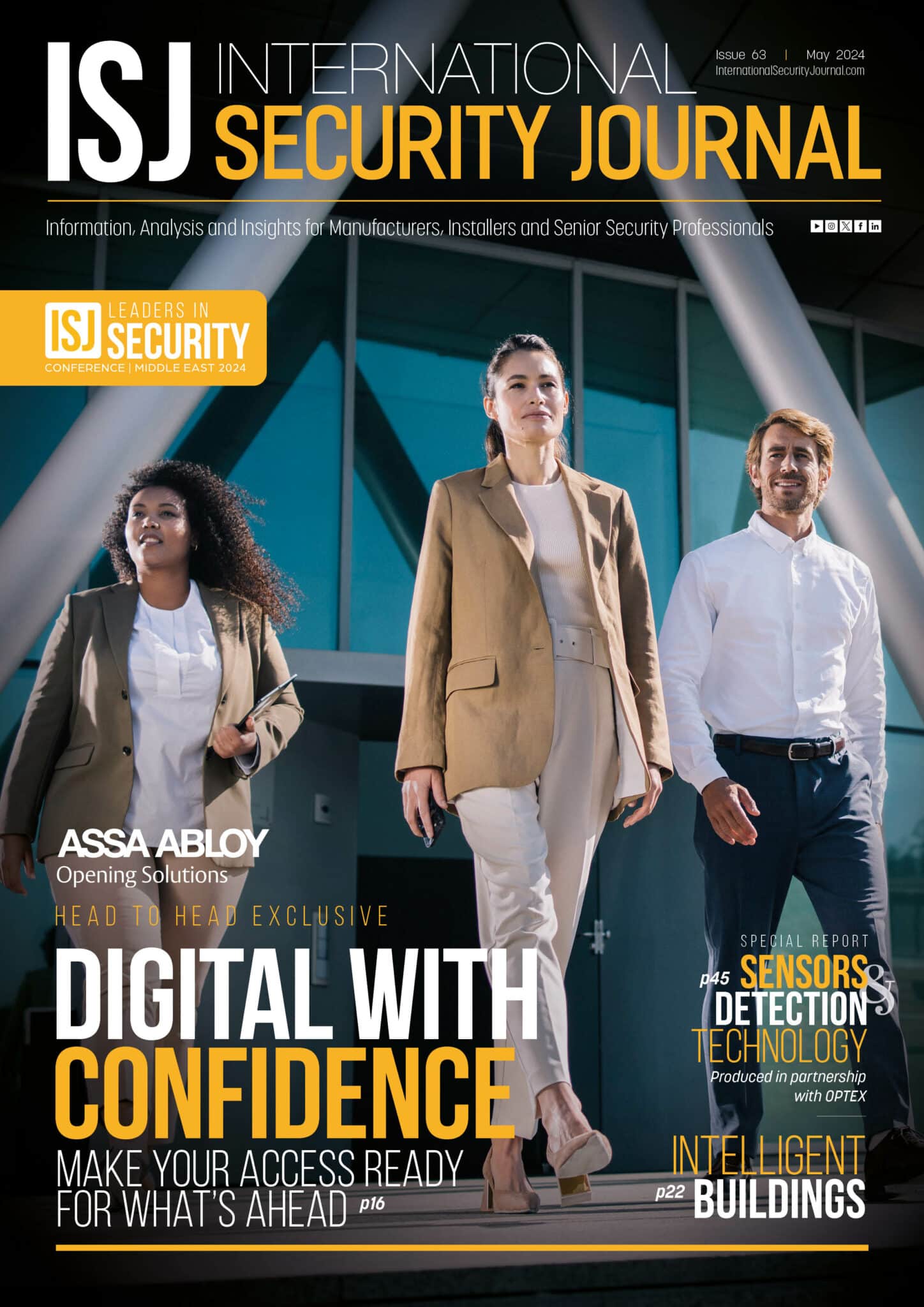Access management: A key consideration


James Thorpe
Share this content
International Security Journal speaks exclusively with David Moser, SVP and Head of Digital Access Solutions, ASSA ABLOY Opening Solutions EMEIA.
Article Chapters
Toggle- In terms of how they impact the wider business, what are the key differences between mechanical and a digital access solutions?
- How can connecting digital systems improve building management?
- How can digital access solutions contribute to more efficient workflows in a changing workplace?
- What level of convenience can mobile technology bring to a business?
- How could a digital access solution help a business reduce energy usage?
In terms of how they impact the wider business, what are the key differences between mechanical and a digital access solutions?
Dynamism and flexibility are the hallmarks of every successful organisation, including in how they manage security.
Access management has a role to play in helping meet efficiency, cost reduction and sustainability targets, while performing its core functions better than ever.
Mechanical access management solutions are less flexible and can hinder a business’ ability to react quickly and flexibly.
A digital solution, in contrast, delivers concrete financial and operational benefits beyond just user safety and security. It’s faster, more flexible and more powerful.
How can connecting digital systems improve building management?
According to a recent report on building system integration: “Access control systems are often viewed as the starting point for a building to shift from operating in siloes, towards a more functional, connected and ‘integrated’ building management system” (Boosting efficiency and streamlining security with an integrated access control solution, a whitepaper from IFSEC Global and ASSA ABLOY Opening Solutions EMEIA).
Smart access management for a smarter building in Paris
For its new Paris headquarters, Canal+ specified a connected smart building to promote efficient, flexible working. Choosing the right access technologies can be a time-consuming task, all too often requiring compromises in the name of compatibility. ASSA ABLOY’s vast range of connectable access solutions helped them match devices to almost any opening in all areas of the building. The new Canal+ solution filters access to and through all technical areas, for 1,200 employees plus visitors and contractors. All Aperio and ABLOY devices integrate seamlessly with the Canal+ Genetec platform.
Such integrated security quickly streamlines employee workflows.
When facilities staff work from a unified interface, rather than multiple parallel systems, they save time and reduce manual errors.
Thus, integration and digitalisation enables businesses to retool building management for the challenges of the 2020s, including with real time data.
An organisation’s readiness to benefit from IoT, AI and Distributed Ledger Technology (DLT), for example, depends on a futureproofed, connectable access and building system.
The smart building is integrated and automated. Connectable technologies ensure that investments made today may be built on seamlessly in the future.
Compatible solutions, ready to integrate with multiple different systems, offer greater peace of mind than proprietary technologies which ‘lock you in’ for the long term.
An access system may also be a goldmine of information to inform business decision making, providing another immediate, tangible ROI. To give just one example: Space utilisation analytics require the data that access control systems generate.
If employees only attend the office for part of the week, a company could reduce its rental space and energy use.
Flexible connectivity of access software will help businesses to align functions and services in ever more creative ways — some that haven’t even been imagined yet.
Connectable solutions prepare a business for what’s to come.
How can digital access solutions contribute to more efficient workflows in a changing workplace?
Monitoring and filtering who can go where – and at what times – ensures that staff and visitors move safely into and around a building. Intelligent electronic access management creates this flexibility.
It also helps businesses implement hybrid working.
In a survey for McKinsey & Company, 63% of employees said they would prefer a “hybrid” or fully remote work pattern. Office-based working, telecommuting, work-from-home (WFH), co-working spaces and hotdesking are all now part of the mix — and are increasingly important for effective recruitment and retention of the best staff.
Flexible working and safer schools in Scotland
More than 70 education sites in Renfrewshire, Scotland, previously relied on a complex mechanical master-key system which was time consuming and inflexible. Renfrewshire Council instead chose CLIQ, electromechanical locking with programmable keys and cylinders. Schools now update each key remotely, removing or granting access privileges in real time. This ensures only authorised keyholders enter premises, eliminating risks associated with lost or stolen keys.
As the fixed “working day” declines, people come and go at different times, with changing schedules, irregular patterns and a mix of different workplaces.
This presents a challenge which many existing access management systems were not built to meet.
An investment in access control to enable this flexibility quickly repays itself.
Wire-free devices with secure web management enables a fast, efficient move to hybrid working, including for security managers.
Credentials like programmable smart keys may be authorised to unlock doors during specific timeframes, so staff enter only when scheduled.
Facility managers then easily regulate daily access across multiple sites, so occupancy stays within capacity.
What level of convenience can mobile technology bring to a business?
Mobile access is changing how we interact with buildings – and manage security.
The smartphone becomes a mobile key just as easily as it transforms into a payment card or a street map.
This convenient device unlocks buildings or rooms, across one or multiple sites, securely and at a lower cost to the business than alternative credentials.
Omdia says that nearly 29.8 million mobile credentials for access control were downloaded globally in 2021, with that number projected to grow 44.9% by 2026.
The security of a mobile credential improves on the smartcard or fob because biometrics are built into almost every modern smartphone via fingerprint or face ID unlocking.
Mobile credentials allow easy implementation of two factor authentication without the cost of new doors or wall devices.
Mobile technology also helps the security department to work smarter.
User credentials may be issued or amended over the air — including for visitors and temporary contractors — without any need for dedicated readers or asking anyone to check-in.
Nobody is left waiting around for access.
When a security administrator cancels a mobile key, it vanishes immediately from the user’s phone.
No more handover meetings must be scheduled when a tenancy, employment contract or visit ends.
Energy efficient access for a sustainability focussed university
As home of the renowned St Andrews Prize for the Environment, the University of St Andrews has a deep commitment to sustainability. For student accommodation, managers sought an energy efficient access solution which respected and reflected these principles. New Aperio wireless access control devices integrate fully with the university’s existing security system and their student ID card. Facility managers enjoy the efficiency benefits of control from a single point, in real time, for multiple buildings.
How could a digital access solution help a business reduce energy usage?
Buildings consume around 30% of the world’s energy.
And according to one estimate, perhaps 30% of energy at commercial, manufacturing and education premises is wasted. Some access control systems are surprisingly resource-hungry — one reason why 90% of security professionals say sustainability will influence their future commissioning.
A wireless access control device consumes less energy at every stage of its life-cycle than an equivalent wired device.
Cable-free fitting is much faster, requiring fewer installer journeys. It is less disruptive: Many wireless locks require little or no drilling around the door.
During operation, instead of an ‘always on’ mains electricity connection powering lock magnets, wireless devices only ‘wake up’ when presented with a credential.
Mobile access for a Spanish co-working space
In the co-working sector, flexible office access is more than ‘a must’; it’s the entire business. As fixed space rented by corporations falls, co-working spaces keep growing. To stand out from the competition, the founders of ULab in Alicante wanted the latest in security, accessibility and design to create its 21st century business centre. Flexible and wire-free, a SMARTair system with Openow, the Mobile Key solution for SMARTair gives ULab real time access control via credentials which are easy to program and reprogram.
Energy use in operation is eliminated altogether in locks powered by energy harvesting technology. Such self-powered locks do not require batteries or any other external electricity source.
With key-based wireless electronic ASSA ABLOY PULSE locks, for example, electronics harvest energy from the key thrust to power communication between credential and device.
Financial and ethical ROIs from greener building quickly add up. Property expert Knight Frank “found a positive and significant effect of Very Good, Excellent and Outstanding BREEAM ratings on prime central London office rents – ranging from 3.7% to 12.3% premiums.”
Less easily quantified energy use benefits also apply.
For example, openings equipped with electronic security are more likely to close properly, boosting thermal efficiency.


